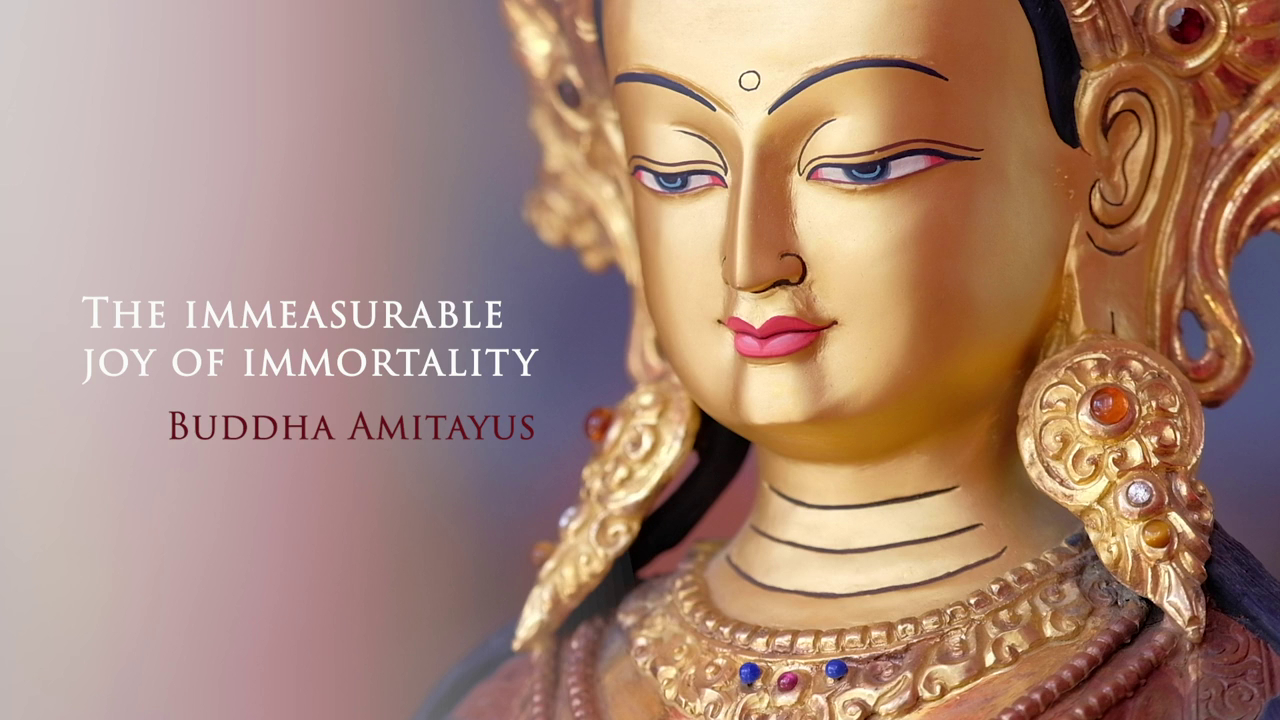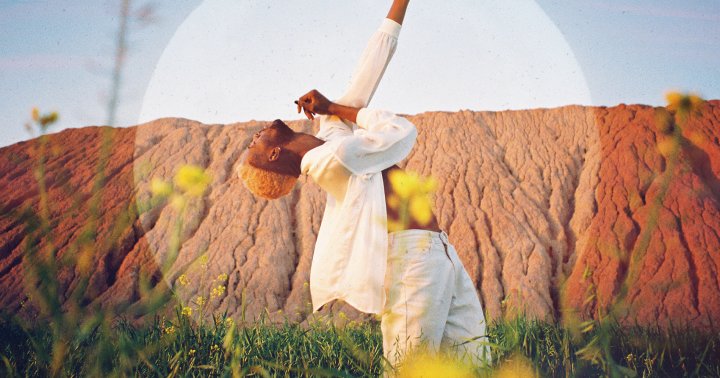Autism and the ‘Satipatthana Sutta’
A neurodivergent writer finds solace and equanimity through the writings and translations of the late Thich Nhat Hanh The post Autism and the ‘Satipatthana Sutta’ appeared first on Tricycle: The Buddhist Review.

My introduction to the Satipatthana Sutta was over thirty years ago when, long before I knew I was autistic, I spent a silent weekend with monastics in Scotland exploring the basics of the Plum Village approach to Zen Buddhist practice. The program—which included sitting and walking meditation, mindful movement, and mindful eating—was based on the exercises the Buddha laid out in the Satipatthana Sutta, Majjhima Nikaya 10, also known as the “Discourse on the Four Establishments of Mindfulness.”
On the first morning, the teacher was taking us through a meditation that was encouraging us to calm down and follow our breath, focusing on the “in and out” of our breathing. As I felt myself relaxing, I heard the teacher ask a question, “do you have a feeling?” As I continued to follow my breath, the teacher developed the guided meditation even further. She inquired, if we had a feeling, did our feeling have a name? She went on to ask how we were caring for that feeling and then made some gentle suggestions about how to care for our feelings with lovingkindness and compassion. In other words, to be mindfully aware of our feelings, in the present moment, without judging or censoring ourselves. As the guided meditation progressed, I became increasingly aware of a headache I was experiencing but chose to ignore it, as I didn’t think that the teacher was referring to a bodily feeling such as that. The headache stayed with me for the rest of that meditation and into the following day.
At breakfast the next morning, as we all sat mindfully munching our muesli, I had a sudden impulse to stand up and leave the room. I walked as slowly as I could to the door, left the dining room, and walked across the hallway to the nearest bathroom. Once I had closed and locked the door behind me, I sat down and burst into tears. I sobbed like I had not sobbed for a long time. A flood of tears and grief flowed from me as I leaned forward and covered my face with my hands. Once my crying subsided, I splashed water on my face and returned to the dining room. My headache gone, I felt much lighter and more present.
For me, this was a very unexpected and unusual experience. Previously, I had not been able to get in touch with my feelings and emotions in this way. And then, suddenly, I experienced this extreme release, and it all happened so quickly that I was taken by surprise.
My understanding of the Satipatthana Sutta is that as well as being mindful of the body in the body, the mind in the mind, and objects of the mind in the objects of the mind, it is also about observing the feelings in the feeling. After my emotional breakthrough that one weekend in Scotland, I began to focus more on the practical application of the sutta in my everyday life. Later, the teaching was made even more clear to me when I read Thich Nhat Hanh’s book Transformation and Healing. Translating and adapting the Satipatthana Sutta, Majjhima Nikaya 10 from the Sutta Pitaka of the Pali canon, Thay writes:
“Whenever the practitioner has a pleasant feeling, she is aware, ‘I am experiencing a pleasant feeling.’ The practitioner practices like this for all the feelings, whether they are pleasant, painful, or neutral, observing when they belong to the body and when they belong to the mind.
This is how the practitioner remains established in the observation of the feelings in the feelings, observation of the feelings from within or from without, or observation of the feelings both from within and from without. She remains established in the observation of the process of coming-to-be in the feelings or the process of dissolution in the feelings or both in the process of coming-to-be and the process of dissolution. Or she is mindful of the fact, ‘There is feeling here,’ until understanding and full awareness come about. She remains established in the observation, free, not caught in any worldly consideration.” (Thich Nhat Hanh, Transformation and Healing: Sutra on the Four Establishments of Mindfulness)
Although the “Discourse on the Foundations of Mindfulness” is essentially a fundamental text meant to guide followers on the path to enlightenment, as an autistic person, it provides me with one of the foundational building blocks for emotional regulation. Many of the challenges that I face are based on thinking differently and having a different kind of awareness than neurotypical people. Yet, as my mindfulness practice and my knowledge of the dharma continues to develop, I am now more able to stay in the present moment with my feelings—and to discern between what is being caused by a physical sensation and what is caused by an emotional narrative—rather than my previous tendencies of trying to bury them all or push them away. This is not to say that things have been easy, and I am still challenged by emotional regulation to this day, but observing my feelings has become part of my practice. In other words, I try to stay mindful of the fact that, “‘There is feeling here,’ until understanding and full awareness come about.” Although I have been the recipient of secular support—in the form of CBT—for anxiety and depression, I find that the deeper spiritual guidance provided by the Satipatthana Sutta, especially Thay’s translation, has actually suited me much better.
Since first being touched by his words, I have grown to appreciate more fully how Thay’s approach to mindfulness is based on practical techniques. His model of 1) stopping, 2) calming the body through breathing, 3) acknowledging that one has a feeling, 4) caring for that feeling by acknowledging the feeling, and 5) looking deeply into its origins, is how I understand the Satipatthana Sutta’s instructions to “be mindful of the feeling in the feeling.” In particular, I find this model most effective when I am emotionally hijacked by anger. As Thay says in his book Peace Is Every Step: The Path of Mindfulness in Everyday Life:
“When our anger is placed under the lamp of mindfulness, it immediately begins to lose some of its destructive nature.”
In a heightened state of surprise or uncertainty, anger is particularly difficult to identify and regulate. It is one of the factors of being autistic that has impacted my life most significantly. In her essay “Processing Time Is Key To Coping With Unexpected Change,” UK-based autistic blogger Catherine Londero describes the heightened disturbance of unexpected events on the lives of autistic people as causing a certain kind of vertigo. She writes:
“A single mundane task which goes differently to normal, can throw me off for the rest of the day. Subconsciously, my brain anticipates and allows space for what it will be needed for each day; when it is then needed for additional processing, it sends me off balance.”
Anticipating being thrown off-balance each time I plan my day can be challenging. My habitual responses to unexpected events causes me either to shut down and isolate myself or feel frustrated and angry, which can sometimes lead to an angry meltdown. A certain amount of anger was certainly the case for me when my usual Tuesday morning routine was recently interrupted by an unexpected event.
Once every week, I run a chess club at a local café. The sessions tend to run smoothly, and, if there are any difficulties, the group usually tends to self-regulate. My main role is to set up the tables, welcome people to the session, and pretend that I know more than the others about chess, in case a technical point needs arbitration.
I was mindful that my perceptions were temporary phenomena and that I should observe them rather than act on them.
On one recent morning, a new player arrived and started to commentate and interfere with the games in progress by instructing two players on the best moves to make. There is always the chance that this kind of behavior, which to me seems disrespectful, will trigger an unskillful response in me. But on this particular morning, I had already begun to be mindful of my body. I was feeling a little rundown, and I was also hungry, as I hadn’t eaten breakfast. Being mindful of my body, I asked how I was caring for my feeling of hunger and, quite frankly, grumpiness. Two answers came to mind, one was to order more coffee and a sandwich. The other answer was to be aware that, when I feel like this, I am more likely to be triggered emotionally. I was already feeling irritated by the newcomer. Instead of pushing this feeling away, I tried to listen to my testiness and start caring for this feeling by reaching out to a friend. I quietly told them how I perceived the situation, how I was feeling, and what I was concerned about. My friend listened to me, and I was able to breathe and acknowledge how damaging it would be for all concerned if I was to succumb to this powerful, negative energy. For me, this was an example of the Satipatthana Sutta’s potential to support me in my day-to-day life, observing the feelings in the feelings, the feelings from within or from without, and the feelings both from within and from without.
After talking things through, I began to realize that I was reacting to my perception of the situation and that was just it—my perception. I was mindful that my perceptions were temporary phenomena and that I should observe them rather than act on them. As Thay spells out in his translation of the Satipatthana Sutta:
“Such is perception. Such is the arising of perception. Such is the disappearance of perception.”
I had decided that the newcomer was being disruptive and disrespectful, which may not have been the case at all. For the rest of the day, I was able to be mindful of my anger and care for myself by breathing, calming my body, and reading from Thay’s book. I began thinking about what had happened more objectively. I was transforming my anger into a more compassionate understanding of what had occurred and how the newcomer may have been feeling, and why he had been stepping in. Maybe he was just trying to be helpful? Maybe he was trying to find his footing in a new situation and it led him to overexert himself? Regardless, my knowledge and practice of the Satipatthana Sutta allowed me a wider awareness and the skills to be mindful of my body, my feelings, and transform powerful afflictive emotions into a more compassionate and skillful response.
I hadn’t realized that, at the close of just one weekend in Scotland more than half a lifetime ago, I had departed with the precious gift of true awareness in my travel bag. For me, the Satipatthana Sutta has been an approach to meditation and mindfulness that has sustained me through the challenges of more than thirty years of living as an autistic person. I still find the Buddha’s teachings to be an internal road map and a set of practical meditation skills that have slowly, over time, helped me to be more aware of my feelings, to be able to regulate them more effectively, and to care for myself (and other people) more compassionately—even when I am overwhelmed by strong, afflictive emotions such as anger.
To this day, I have nothing but love and gratitude to my teachers—and especially Thich Nhat Hanh—for introducing me to the wisdom found in the Satipatthana Sutta.

 JimMin
JimMin 






























